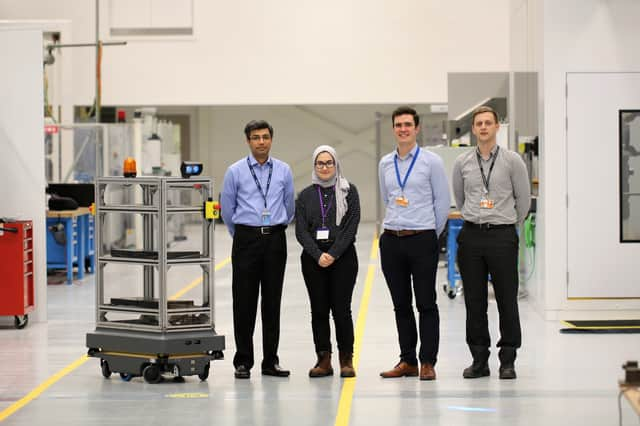Robot and human 'highway code' plan at pioneering Rotherham factory


The Advanced Manufacturing Research Centre has linked up with the Airbus production facility at Boughton on the research.
Successful tests have seen the robots moving tools on the shopfloor — and now engineers say whole plane parts could be shifted between factories in the same way within five years.
Advertisement
Hide AdAdvertisement
Hide AdSenior project engineer Dr Lloyd Tinkler, from the AMRC Integrated Manufacturing Group, said: “Supervised trials of the robots have taken place.
“It’s estimated that utilising them could save the equivalent of one operator per shift at Airbus, freeing time for the operators to work on highly-skilled tasks, ultimately improving shopfloor productivity.
“This outcome has led to Airbus exploring opportunities where such robots could be used to optimise processes, including specially adapted versions to pull trolleys with aircraft parts and tooling already in use at the Airbus site.”
Amer Liaqat, a technology manager at Airbus UK, said: “We can see the potential to go even further and work with the AMRC to develop autonomous mobile robots for precision assembly tasks such as component positioning and certification.
Advertisement
Hide AdAdvertisement
Hide Ad“Developing it further, we could see this technology being utilised to transport an entire aircraft wing between factories on site at Broughton.”
The robots have been developed by the AMRC based on the MiR200 robot from Danish company, Mobile Industrial Robots ApS.
They have a payload of 200kg, a top speed of 4kph and engineers have adapted them to safely move items like drilling tools.
In-built laser scanners map the environment, so the robots can navigate their surroundings unaided by human intervention.
Advertisement
Hide AdAdvertisement
Hide AdFlashing lamps and beacons show which direction the robot intends to go for the benefit of any people working in the same area.
Prof Ash Tiwari, manufacturing expert at the University of Sheffield, said the project team was now looking to produce a “highway code” for interaction between robots and humans in workplaces.